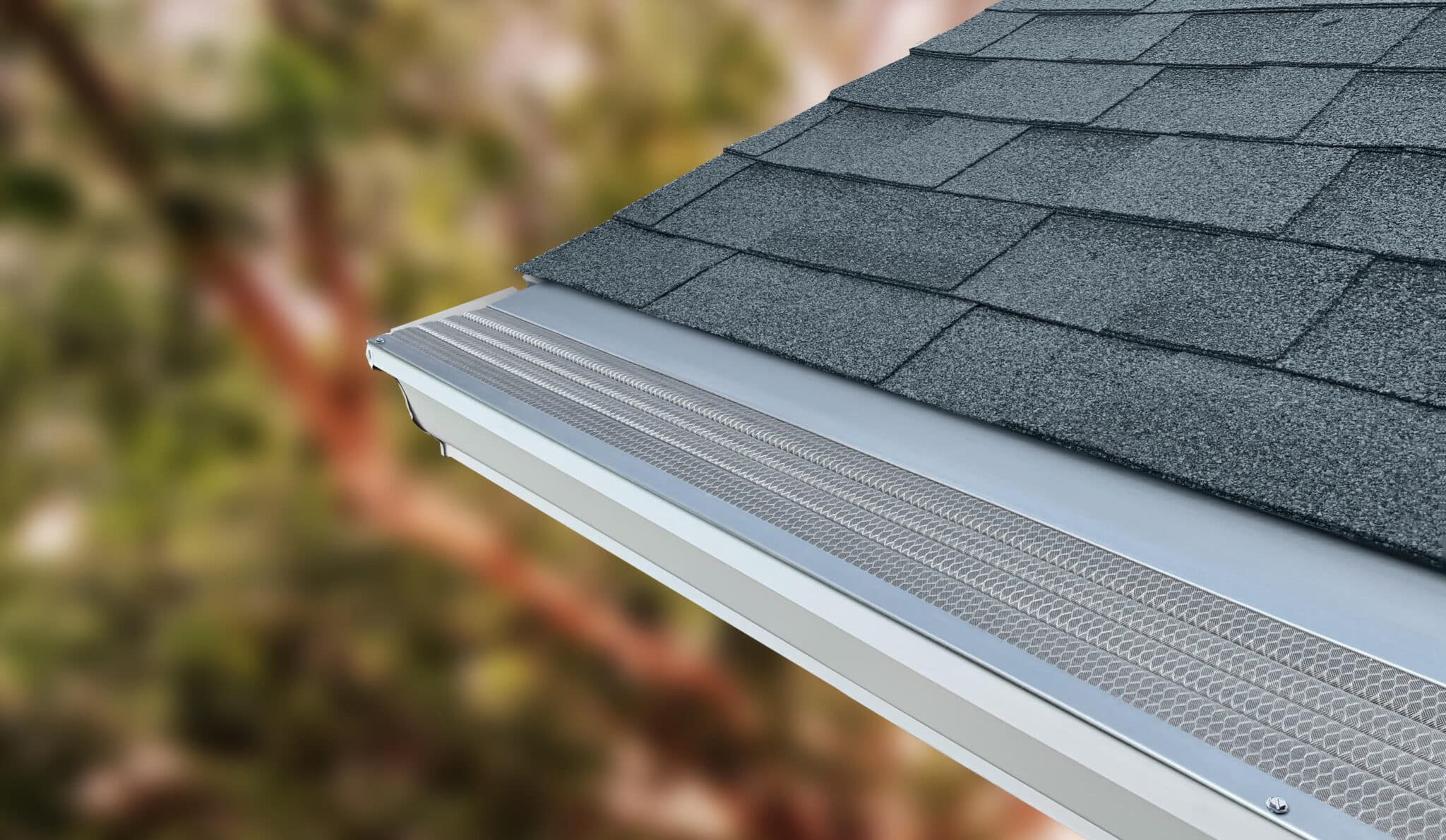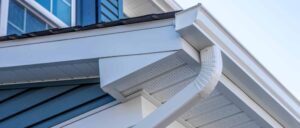Gutter installation costs in the range of $12–$33 per linear foot, or between $2,300 and $6,650 to install 200 linear feet of gutters. While this may seem steep, one expert says it’s less expensive in the long run to install gutters than to repair water damage.
“Gutter installation is valuable for protecting your home, particularly if you have a basement in a humid area,” said Thomas Ballestero, Ph.D., the director of the University of New Hampshire’s Stormwater Center. “While homes can function without gutters if properly designed, gutters are a cost-effective form of preventive maintenance.”
Our January 2025 survey of 1,000 homeowners with gutters showed that gutter length and material type are the biggest cost factors for installation. Vinyl, aluminum, and steel gutters are more affordable than premium materials, such as copper and zinc, which can cost more but are long-lasting and can improve the look of your home.
In this guide, we examine the factors affecting the cost of gutter installation and dive into the must-know considerations for planning a professional or do-it-yourself (DIY) gutter project.
Key Takeaways
- New gutters cost an average of between $12 and $33 per linear foot, depending on the material.
- A gutter installation project for a 2,000-square-foot home typically costs between $1,432 and $6,650.
- Vinyl and aluminum are the most popular and least expensive gutter materials.
- The size of your home and the materials you choose are the biggest factors in the cost of gutter installation.
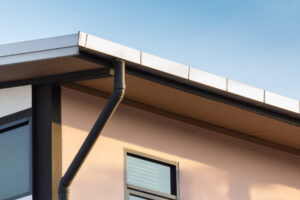
Gutter Installation Cost
The price of a new gutter installation depends primarily on the square footage of your home. Generally, a larger home with an expansive roofline will require more gutter material, which increases the total project cost.
In most cases, if you divide the square footage of your home by 10, you can estimate the linear feet of material you will need for new gutters. A typical 2,000-square-foot home will need 200 linear feet of material based on this calculation.
Keep in mind that the material, gutter brand, and labor costs also influence price. The table below provides a general cost range by home size.
Note: The cost information in this article was calculated using estimates from the Homewyse contractor pricing guide, unless otherwise noted.
| Home Size (Square Feet) | Linear Feet of Gutters | Average Cost Range |
|---|---|---|
| 1,000 | 100 | $1,300–$6,200 |
| 1,200 | 120 | $1,560–$7,440 |
| 1,500 | 150 | $1,950–$9,300 |
| 2,000 | 200 | $2,600–$12,400 |
| 2,500 | 250 | $2,925–$15,500 |
What Factors Affect Gutter Installation Cost?
The two biggest factors in gutter installation cost are the size of your gutter system and the materials you use. Other cost factors include the brand you choose, your location, local labor costs, and fluid market conditions such as material availability.
Below, we examine these factors in detail.
What You Should Know About Gutter Materials
The material type you buy for your gutter replacement influences your gutter installation cost. Each gutter material varies in price per linear foot. In addition, some materials, such as galvanized steel, take longer to install, which influences labor rates.
The following table breaks down the cost of new gutter installations by material based on linear foot and the total installation cost for a typical 200-linear-foot gutter system.
Average Gutter Installation Cost by Materials
| Material | Labor Cost | Material Cost | Total |
|---|---|---|---|
| Aluminum | $666 | $1,665 | $2,331 |
| Copper | $666 | $5,594 | $6,260 |
| Galvanized metal | $655 | $1,495 | $2,385 |
| Steel | $666 | $1,843 | $2,500 |
| Vinyl | $666 | $766 | $1,432 |
| Wood | $1,280 | $5,370 | $6,650 |
Our hands-on testing and customer surveys show that aluminum seamless gutters are a good choice for a reliable, long-lasting rain gutter system at a mid-range price. Several of our top-rated gutter installation companies, including LeafFilter and Leafguard, use aluminum as the material for gutters.
If you live in an area with extreme weather or high winds, consider a heavier gutter system, such as stainless or galvanized steel. Copper gutters may also be worth the investment and add to your resale value if you live in a historic home. While vinyl and polyvinyl chloride (PVC) gutters are attractively priced compared to aluminum and stainless steel, they aren’t as durable and are more likely to break in harsh weather conditions.
Whatever kind of gutter system you choose, we recommend researching local installation companies and requesting free quotes. Consider getting quotes from gutter guard companies to add long-term protection for your gutters. Gutter guards help prevent debris from clogging your gutters, which can reduce the number of times you clean your gutters and the likelihood of expensive water damage.
Below, we highlight the common gutter material types you can buy for your home.
- Vinyl and PVC: While PVC (polyvinyl chloride) and vinyl are different materials, they are used interchangeably in gutter installations. PVC and vinyl are also the most fragile gutter materials available and may crack, break, or warp in severe temperature changes. In moderate climate conditions, you can expect PVC or vinyl gutters to last 10–20 years.
- Aluminum: Aluminum gutters are lightweight, rust-resistant, and easy to install. Under ordinary conditions, they typically last 20 years or more. “Material choice is crucial, with aluminum being the current industry standard due to its durability, corrosion resistance, and recyclability,” says Karl Seelbach, carpentry department head at Laney College. “While copper and stainless steel offer elegance and longevity, they come at a premium price point.” The downside to these gutters is their tendency to dent from impacts, such as hail or falling tree limbs.
- Galvanized steel: Galvanized steel gutters have a zinc coating that helps improve their resistance to rust and corrosion. Compared to aluminum, galvanized steel is less likely to dent, but it’s also heavier and more difficult to install. Galvanized steel gutters generally last 20 years or more.
- Copper: Copper gutters have an old-world, regal look and a long lifespan. However, they tend to be pricier than the previous three materials mentioned above. With regular cleaning and maintenance, copper gutters last more than 50 years.
- Zinc: Zinc is a low-maintenance but expensive, high-end material that doesn’t rust. It forms a self-healing patina that obscures scratches and scrapes. These gutters can last 80 years or more.
Home Size
While we recommend contacting a professional gutter company for a more accurate installation quote, you could get a ballpark estimate yourself by taking measurements of your roof. Follow these steps to see how much you’ll roughly pay for new gutters:
- Measure the area for which you need gutters. Make sure to get the length and width of every portion of your roof you want gutters on.
- Multiply the measurement in square feet by the cost per linear foot of the gutter material you want to install. If you haven’t settled on a material yet, the average price for gutter installation is about $32 per linear foot.
We also suggest consulting a professional if you’re not sure how to measure your roof properly or lack the necessary tools.
Average Gutter Installation Costs by Linear Feet
| Home Size | Gutter Length | Average Cost Range |
|---|---|---|
| 1,000 square feet | 100 linear feet | $807–$3,416 |
| 1,200 square feet | 120 linear feet | $933–$4,078 |
| 1,500 square feet | 150 linear feet | $1,121–$5,045 |
| 2,000 square feet | 200 linear feet | $1,432–$6,650 |
| 2,500 square feet | 250 linear feet | $1,743–$8,255 |
Gutter Type
The type of gutter impacts both material and labor costs. Less common gutter types are more expensive and typically require specially trained installers. For example, seamless gutters require special machinery to form and install on your home. Below, we give a brief overview of the most common gutter types.
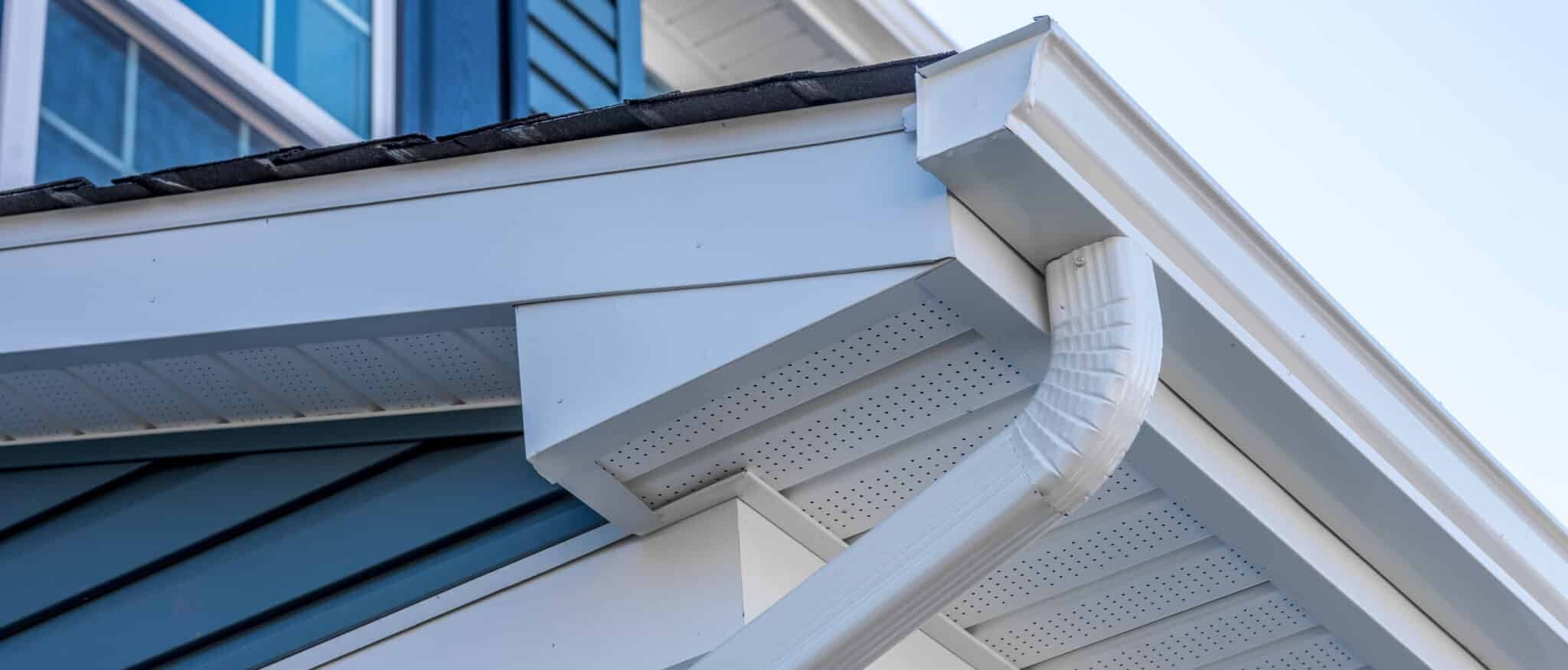
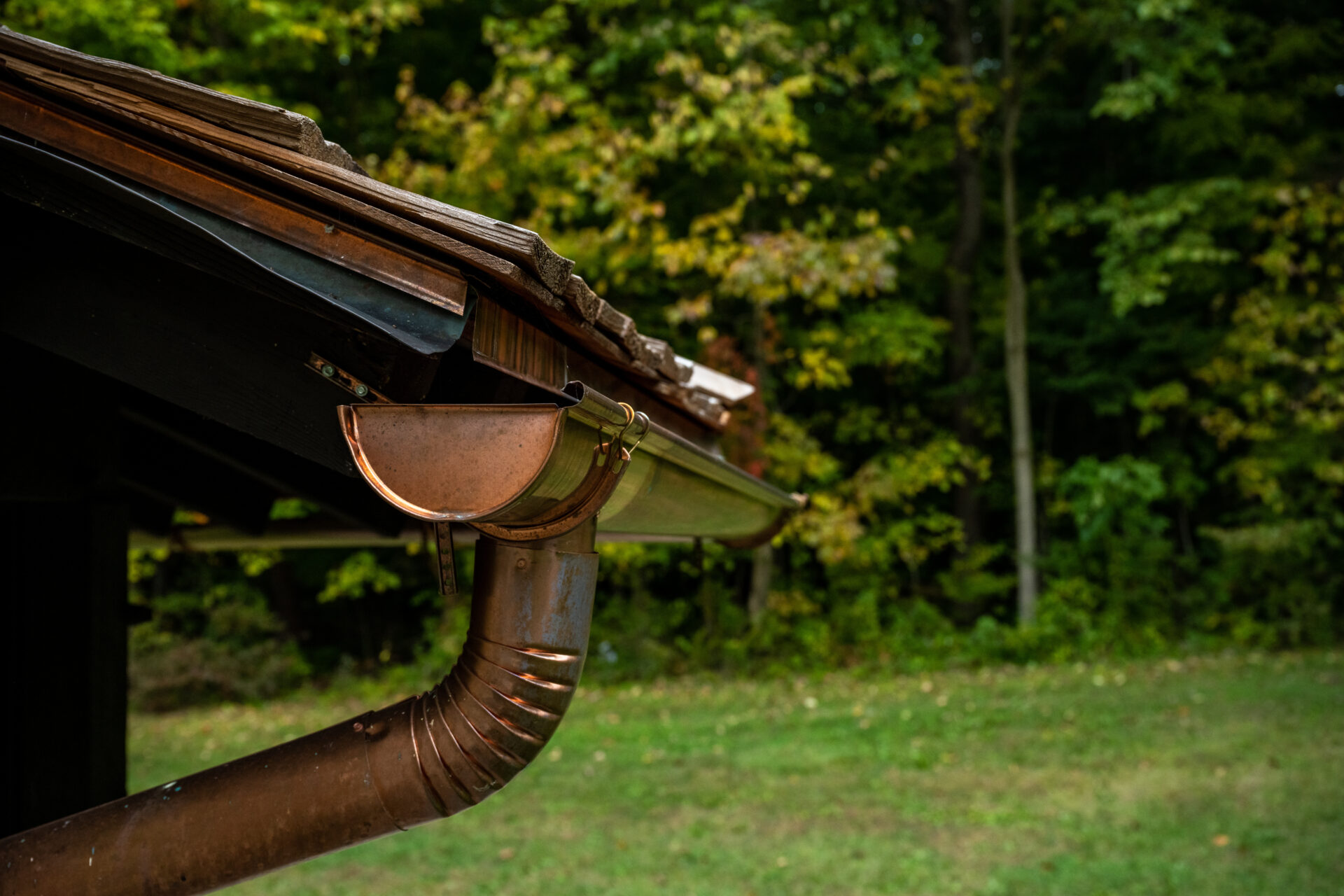
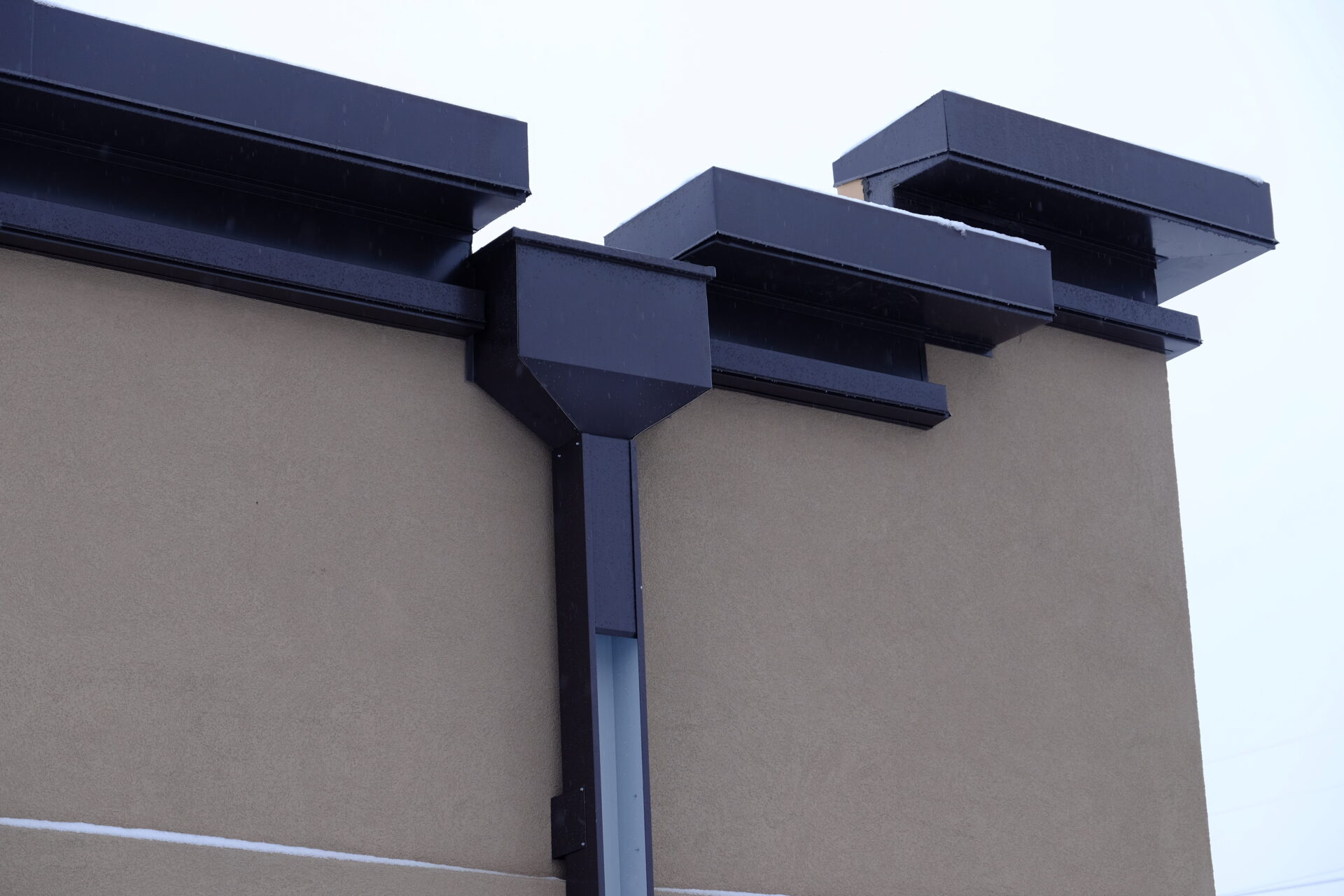


Location
The state where you live is also a factor influencing the cost of gutter installation. According to cost information sourced from RS Means from Gordian™, Minnesota residents pay the most for gutter installation at an average of $36.02 per linear foot across all gutter materials. Vermonters pay the lowest average cost at $23.65 per linear foot.
The national average is $31.56, when all gutter materials are taken into account.
States With the 10 Highest Average Costs Per Linear Foot
| State | Average Cost Per Linear Foot |
|---|---|
| Minnesota | $36.02 |
| Colorado | $34.41 |
| Georgia | $34.36 |
| Texas | $34.34 |
| Nevada | $34.16 |
| New Hampshire | $33.84 |
| Ohio | $33.78 |
| Washington | $33.56 |
| Tennessee | $33.41 |
| Michigan | $33.32 |
| National Average | $31.56 |
States With the 10 Lowest Average Costs Per Linear Foot
| State | Average Cost Per Linear Foot |
|---|---|
| Nebraska | $30.34 |
| Connecticut | $30.34 |
| New York | $29.64 |
| New Jersey | $29.53 |
| Pennsylvania | $29.19 |
| Florida | $29.09 |
| West Virginia | $28.75 |
| Rhode Island | $27.56 |
| Maine | $26.84 |
| Vermont | $23.65 |
| National Average | $31.56 |
Labor Rates and Permits
The availability of services, local taxes, and regional income levels impact general labor rates, which in turn affect the price of your professional gutter installation.
Additional Gutter Parts
Your installation estimate will include the cost of materials for components such as brackets, downspouts, elbows, gutter end caps, hangers, and splash blocks. The table below shows the cost range for these parts found on the Home Depot website.
Cost Range for Additional Gutter Parts
| Gutter Part | Cost Range Per Unit |
|---|---|
| Brackets | $6–$60 |
| Downspouts | $9–$83 |
| Elbows | $3–$8 |
| End Caps | $2–$10 |
| Hangers | $3–$18 |
| Splash Blocks | $6–$58 |
Ways To Ensure Value With a Gutter Installation
The best way to save money on gutter installation in the long run is to make sure you do everything you can to extend the life of your gutter system. That means conducting regular maintenance to keep your gutters running clog-free and efficiently.
Experts recommend cleaning your gutters at least twice per year, such as at the end of fall and spring. You’ll remove the most debris at once during these times of year.
“Several maintenance steps can help extend the lifespan of gutters,” said Mohsen Goodarzi, Ph.D., assistant professor of construction management at Ball State University.
Goodarzi suggests cleaning your gutters regularly, adding protective guards on top of the gutters to reduce clogging, and ensuring your gutters’ downspouts are facing away from your home’s foundation to prevent water damage.
Gutter Guards Can Save You Time
Purchasing gutter guards with a full gutter system is common for homeowners who want to get the most out of their home drainage system.
In January 2025, we surveyed 1,000 gutter guard customers nationwide. Our survey showed that 63% of respondents saved 4–8 hours or more per year on maintaining their gutters after installing gutter guards.
Should You Repair or Replace Your Gutters?
Replace your gutters if connections are broken, rust is prominent, or they no longer function as expected. Before scheduling a gutter replacement, consider whether your system is at the end of its life or just requires a quick gutter repair.
“Key signs that it’s time to replace your gutters include visible cracks, rust spots, sagging or pulling away from the home, and frequent clogs,” said Salman. “Water pooling around your home’s foundation, leaking at the seams, or mildew growth can also signal gutter wear.”
Signs You Should Repair Your Gutters
If your existing gutters sustained damage from a hailstorm or have loose hangers, you can likely do repairs rather than invest in a new system. However, if your old gutters are nearing the end of their life, small repairs or patch jobs may only offer temporary fixes at best.
Ballestero added that proper gutter maintenance can prevent many issues that signal gutter replacement. He recommends cleaning gutters twice a year, especially if you live in areas with heavy tree debris buildup.
Here are some signs that indicate that your gutters need cleaning or a repair rather than a full replacement:
- Disconnected gutter sections
- Frequent crawl space or basement flooding
- Mold, moss, or mildew growth
- Standing water and saturated soil on your property
- Streaks along your home’s siding
Signs You Should Replace Your Gutters
The following signs indicate it may be time to replace your gutters:
- Broken or disconnected downspouts
- Foundation cracks, chips, or shifting
- Multiple cracks, gaps, or breaks in gutter sections
- Rust or chipped paint on gutters
- Sagging of one or more sections
- Water damage to siding, fascia, soffits, or other roof sections
DIY vs. Professional Gutter Installation
Homeowners can choose between a do-it-yourself (DIY) or professional gutter installation. Each method has its own pros and cons, but the main differences are cost and quality.
“DIY gutter installation is possible, especially with sectional gutters, and can save on labor costs.” said Amna Salman, Ph.D., assistant professor at the McWhorter School of Building Science. “However, hiring a professional is often worth the investment for a precise fit, particularly with seamless gutters. Professionals bring expertise in correct gutter pitch, alignment, and secure attachment, and they also have the right equipment for safe roof access.”
Salman added that professional installation helps ensure durable performance and minimal maintenance. The DIY route always costs less because it bypasses labor rates and other fees charged by gutter companies. However, gutter companies have the advantage of accessing materials and using techniques unavailable to even highly proficient homeowners.
For example, homeowners can’t install seamless gutters themselves because they require a rolling machine and special training. Many gutter materials, such as copper, zinc, and steel, are also challenging to install because their weight makes them unwieldy and dangerous for one person to handle.
Pros and Cons of Professional Gutter Installation
Pros
- Professionals have easier access to high-end materials like copper and zinc
- Equipped and trained to handle heavy materials and work in high places
- Include warranties on their work
Cons
- Usually costs more because you’re paying for labor
- Less flexibility to choose the timing for your project compared to DIY methods
Expert Insights Into Gutter Installation Costs
Is Residential Gutter Installation Worth It?
Are There Signs That Your Gutters Need Replacement?
How Can You Extend the Life of Your Gutters?
Is the Cost of Gutter Installation Worth It?
The cost of a gutter installation is worth it if you live in a particularly rainy region and have concerns about potential water damage related to drainage. Your home’s foundation might not be equipped to handle a large volume of rainwater, but a properly installed gutter system can divert running water and protect your foundation.
FAQs About Gutter Installation Costs
Do gutter alternatives work?
Gutter alternatives don’t work as well as gutters in most situations. For example, rain chains and drip paths overflow in moderate rainfall. However, if your home’s landscaping has gradation that slopes away from your foundation, alternatives may be enough to protect your foundation.
How often should you replace your gutters?
Gutters have different lifespans depending on the material. Plastic gutters last 10–20 years, aluminum and steel last up to 20 years, and copper lasts 50 years or more.
What is the most common problem with gutters?
The most common problem with gutters is their constant debris buildup and clogging issues. As plant debris gets pushed by the wind, it lands inside your gutters and causes clogs and overflow. This spillage can eventually lead to water damage, soil erosion, and foundation shifting.
Can a lack of gutters cause foundation problems?
Yes, not having gutters can cause foundation problems. Without gutters, water is free to flow from your roofline right onto your foundation. This hydrostatic pressure will lead to foundation cracks, shifting, and other expensive problems. However, gutter systems may not be required if you live in an area with little to no rainfall.
Do gutters increase property value?
Gutters do not typically increase the value of your property. However, having a gutter system that works as designed will direct excess water away from your home’s roof and foundation, which can help avoid expensive repairs. Certain gutter systems, such as half-round copper gutters, can increase the curb appeal of your home, which may add value to your home when you sell it.
